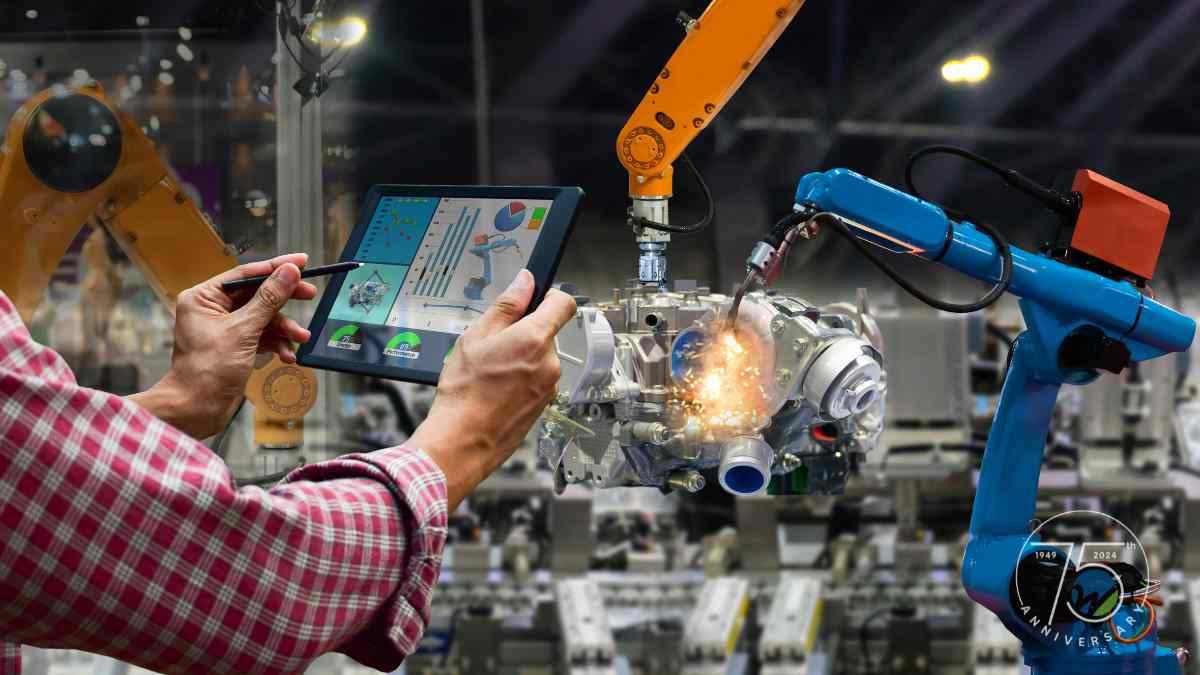With the U.S. Bureau of Labor Statistics projecting a 6% decline in employment for assemblers and fabricators from 2022 to 2032, and around 200,000 job openings each year, it’s clear that manufacturers need to find innovative ways to do more with their existing labor force.
Automation offers a practical solution.
The Case for Automation
Automation is particularly beneficial for repetitive and labor-intensive tasks. It can significantly improve throughput and cycle times, reduce reject rates and scrap, and ease the labor burden on operators. Automation can even enhance the quality of life for operators. For example, instead of having to operate a heavy press lever manually, an operator could use a pneumatic device with the press of a button. Better yet, a computer could identify at which point in the process the pneumatic should be utilized without any operator input.
The best place to start is by identifying a single, repetitive task that can be automated such as:
- Fitting individual parts into a jig for auto welding.
- Uniformly applying adhesive labels as a finishing process.
- Verifying that a completed part meets quality standards.
Often, this initial step leads to the discovery of additional tasks that pair well with existing automation.
Collaborative Robots
Collaborative robots, or “cobots,” are designed to work alongside human operators and are becoming more accessible and affordable. The lower costs of robotics, coupled with increasing labor rates, result in quicker returns on investment (ROI). The versatility of these robots, which can be programmed to perform multiple functions, further enhances their potential ROI. In recent years, robotics programming has become more user-friendly, with streamlined software interfaces that guide users through step-by-step setup.
When it comes to artificial intelligence (AI) in robotics, the AI doesn’t need to be complex. For instance, visual AI using cameras can identify the orientation of input components, allowing robots to pick up and manipulate parts to fit the manufacturing process. Often, all that’s required is a small sample of good vs. bad inputs to train the AI to recognize the necessary criteria.
A Real World Application
Consider a plastic injection molding manufacturer that needs to heat set a brass threaded insert into the center of a molded part. The traditional, manual process involves an operator picking up the insert, identifying its orientation, opening a press door, setting the insert, closing the door, and starting the setting operation. This process, especially when the mold produces several parts at a time that require an insert, leads to highly variable cycle times.
However, introducing a collaborative robot can streamline this process. In this instance, the robot would use a pneumatic device to open and close the press door, a vibrating table and a camera to identify and pick up properly oriented inserts, and a jig to align the inserts to be heat set into the molded parts. This automation makes cycle times predictable and often shorter, boosting productivity. The operator is then free to oversee multiple presses, significantly increasing their efficiency and total output, leading to greater ROI.
Additionally, in many cases, this sort of automation leads to less stress for the operator.
Positive Outcomes
There are a variety of reasons manufacturers should consider leveraging automation such as:
- Staffing and Labor Benefits
- Automation can ease staffing shortages and reduce labor costs by minimizing the need for additional hires or freeing up current staff to perform higher-level work or manage more processes simultaneously. With realities of the current labor and economic markets, this impact cannot be overstated. Automation can also improve the quality of work life for employees, improving employee retention.
- Improved Efficiencies
- In addition to the labor efficiencies mentioned above, automation often reduces cycle rates and improves throughput. This can lead to shorter lead times, improved margins, and improved customer satisfaction through more timely deliveries with fewer nonconforming goods.
- Financial Incentives
- Investing in automation and improving product quality and production processes can qualify for Research and Development (R&D) tax credits. (Register for our free R&D Credit Deep Dive webinar)
By strategically implementing robotics and automation, manufacturers can not only address current challenges like labor shortages and rising costs, but also position themselves for future growth. Automation offers a practical solution to improve efficiency, quality, and productivity. As technology continues to evolve, the potential benefits of automation will only increase. By embracing these advancements, manufacturers can create a more competitive and sustainable business for the future. Our Manufacturing Advisors are here to help you maximize the financial incentives of automation. Keep an eye out for further articles that will delve into key strategies for manufacturing organizations in 2024 and beyond.





